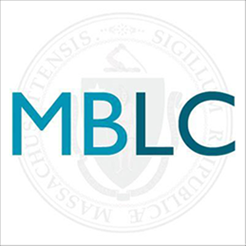Shopping for Statewide Databases : Chasing the Best Value for the Commonwealth

By Paul Kissman, MBLC Library Information Systems Specialist
We’ve just completed a procurement process for the next set of statewide databases, a fifteen month long odyssey. There were moments that put me in mind of those old shopping-themed TV game shows. Some days we were contestants on Supermarket Sweep, as we frenetically raced the clock to put as much quality content in the cart as possible before the bell rang. At other times, we were competing on The Price is Right, guessing at that ineffable figure, the actual dollar value of a database.
But it was no game, and there were no big prize winners at the end. With a 30% reduction in funding we knew right from the start that the results of our efforts were going to be bittersweet. We are proud of what we accomplished, and Massachusetts libraries will continue to have a strong core set of databases. But we also know that we have lost access to some very important products; our shared resources are that much smaller.
Where Do We Stand and How Did We Get Here?
Beginning July 1, Massachusetts libraries will have the same three vendors and a set of database products that looks an awful lot like what we have today — just diminished.
Some of you may wonder, “Why all the sound and fury then? Why the big process?” Are we complacent, taking the path of least resistance? Maybe we lack the courage to try something new or maybe we have a hidden bias in favor of the incumbent vendors and familiar products.
Though we heard from many libraries and invited input along the way, including a month-long open trial and vendor demonstrations to representative stakeholders, our decision-making process may look like a black box to many of you. Without going into the gory details, here is what the procurement looked like from the inside.
Peeking Under the Hood
Who exactly sets the stage and makes the final procurement decisions? MBLC and MLS, with a sprinkling of Library for the Commonwealth. These three organizations have worked hard to complement each other’s offerings. With shrinking budgets and other critical priorities we can’t afford not to. Though I’d like to think we would anyway.
MBLC appointed an advisory committee of ten very smart and knowledgeable librarians from academic, school and public libraries to help guide us through this process. They were content specialists — the ones doing bibliographic instruction, working with teachers, students and the general public every day. Their contributions were incredibly valuable. They each represented their own library types’ interests but showed great sensitivity to how different products would be valued by users of all types of libraries. Not an easy thing to do. They analyzed product titles to gauge full-text content, overlap, uniqueness and value. I came out of the process with tremendous respect for their skills and experience, and I am grateful that they were there every step of the way. Thanks guys!
We first began to experiment with databases for all regional members twenty years ago. Gale/Cengage, then Information Access Company, was our first provider with some general periodical content. Since that time we have run five procurements and have contemplated many approaches. We’ve considered targeted solutions for different library types: school-centric products for schools, more specialized databases for our academics and special libraries, local newspaper products only available to parts of the state. We’ve tried creating a market basket, where preferential pricing was offered for libraries or groups wishing to supplement what the state could offer. Five years ago, we managed to expand the subject areas and types of resources, asking for genealogy and language learning products, both general and specialized encyclopedias. Though the genealogy and language products didn’t pan out, we were able to add a general encyclopedia for the first time.
We have to find products that appeal to all types of libraries. The scope of the our procurement is determined by usage statistics and surveys. Usage statistics are necessarily limited to current product offerings. However, when establishing the procurement scope, we only use these statistics to draw inferences about subject coverage, not about particular titles from particular vendors. The only exception to this rule is The Boston Globe, a specific title. A large library survey in the spring of 2016 gave us broader insight into library preferences.
Why Do We Always Seem to End Up with the Same Vendors?
The answer is fairly straightforward. They have consistently provided the best value for the Commonwealth. It doesn’t mean that this will always be the case.
In the past we’ve disqualified vendors because they could not demonstrate the capability to roll out services statewide, work with our statewide login process (geolocation for users in Massachusetts) or set up 1,600+ library accounts. They couldn’t provide interoperability with library discovery systems and knowledgebases, provide granular usage statistics and related management tools. Not this time. All six vendors were sufficiently qualified.
We try really hard to be objective and open to new solutions. I know that I get enthused about new products, new platforms, new vendors. I also like to see the progress that familiar companies have made with their user interfaces. From one procurement cycle to the next, the three big periodical vendors, EBSCO, ProQuest and Gale seem to leapfrog past each other in user interface design and usability . This time around all three main platforms were really solid, with contemporary interfaces providing excellent user experience. That hasn’t always been the case.
From the library community we hear competing interests. Some academics have urged us to license EBSCO so they can repurpose their limited budgets. Public libraries and schools may not want us to change vendors because then they would have to extensively retool and retrain patrons.
There is no alchemical mixture of intangibles at work here. As with any rigorous procurement, we use weighted score sheets to evaluate the various components of each proposal. Content (which is weighted most heavily), organizational qualifications, technical qualifications, ability to license to all our users, all are evaluated and quantified. Cost is the last factor we look at.
What’s on Offer
It is important to remember, we can only evaluate what the vendors propose. Sometimes librarians will ask why we didn’t license a particular product. Often the answer is, “It wasn’t proposed”. Sometimes products are simply out of scope. Sometimes proposed packages don’t provide enough valuable content to schools, or academics, or even to public libraries.
Sometimes there is not a good business case from the vendor perspective. We can’t afford to replace the large base of existing academic contracts for products like Academic Search Premier from EBSCO. EBSCO has indicated that a statewide offering this comprehensive would be way beyond our means and so they don’t propose it. Thus, academic libraries see they will need to keep their EBSCO contracts, but they also find tremendous value in Gale Academic OneFile as a complement to their own locally-licensed content.
The Globe is the Globe. We reached out directly to both the Boston Globe and New York Times, but they declined to bid. For the Globe, ProQuest was the only game in town.
Encyclopedias – World Book and Britannica were both highly esteemed products. Britannica appealed more to public and academic libraries, as World Book seemed more targeted to K-9. At the end of the day, Britannica had the broadest appeal, and was the product that we could afford.
So here we are, entering a new fiscal year with old friends. We ended up here for good reasons. Maybe next time around things will turn out differently.
